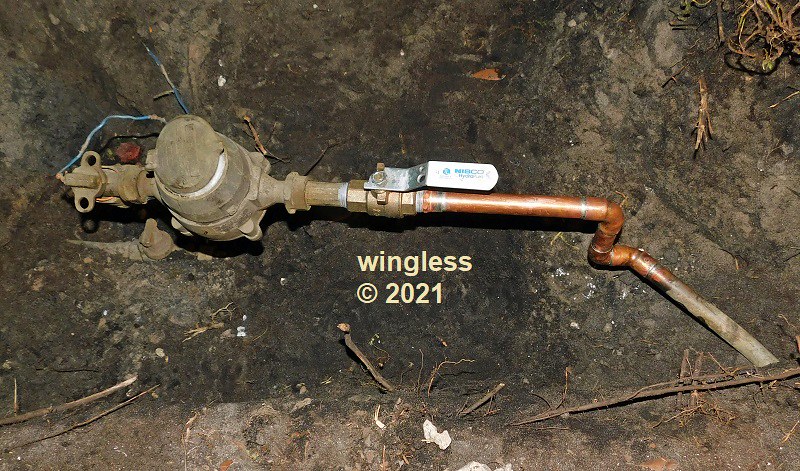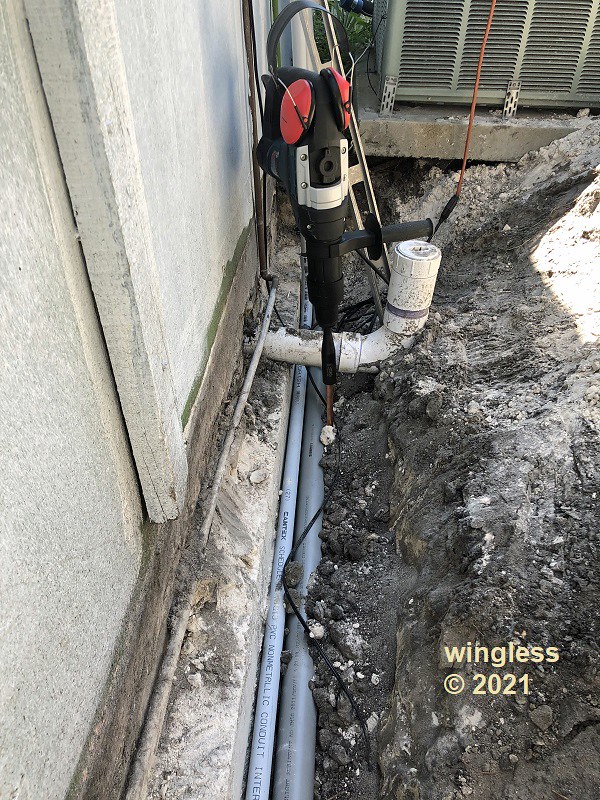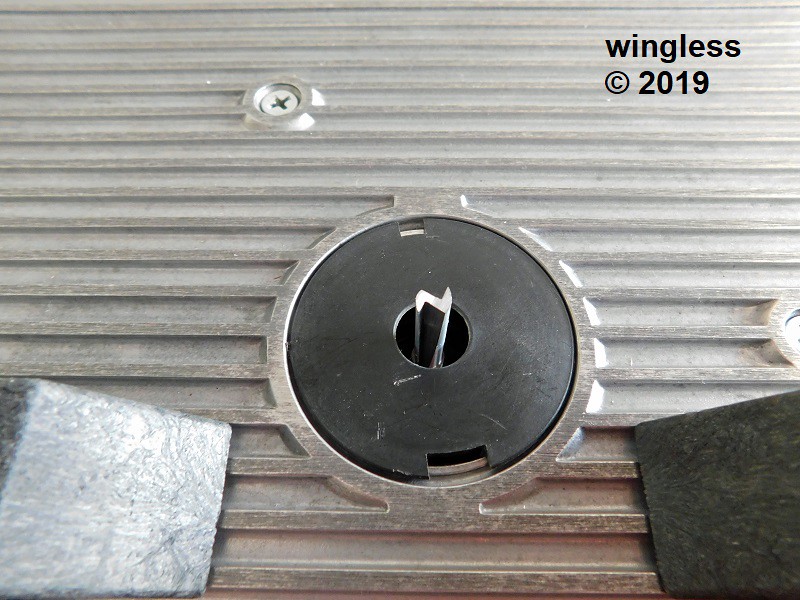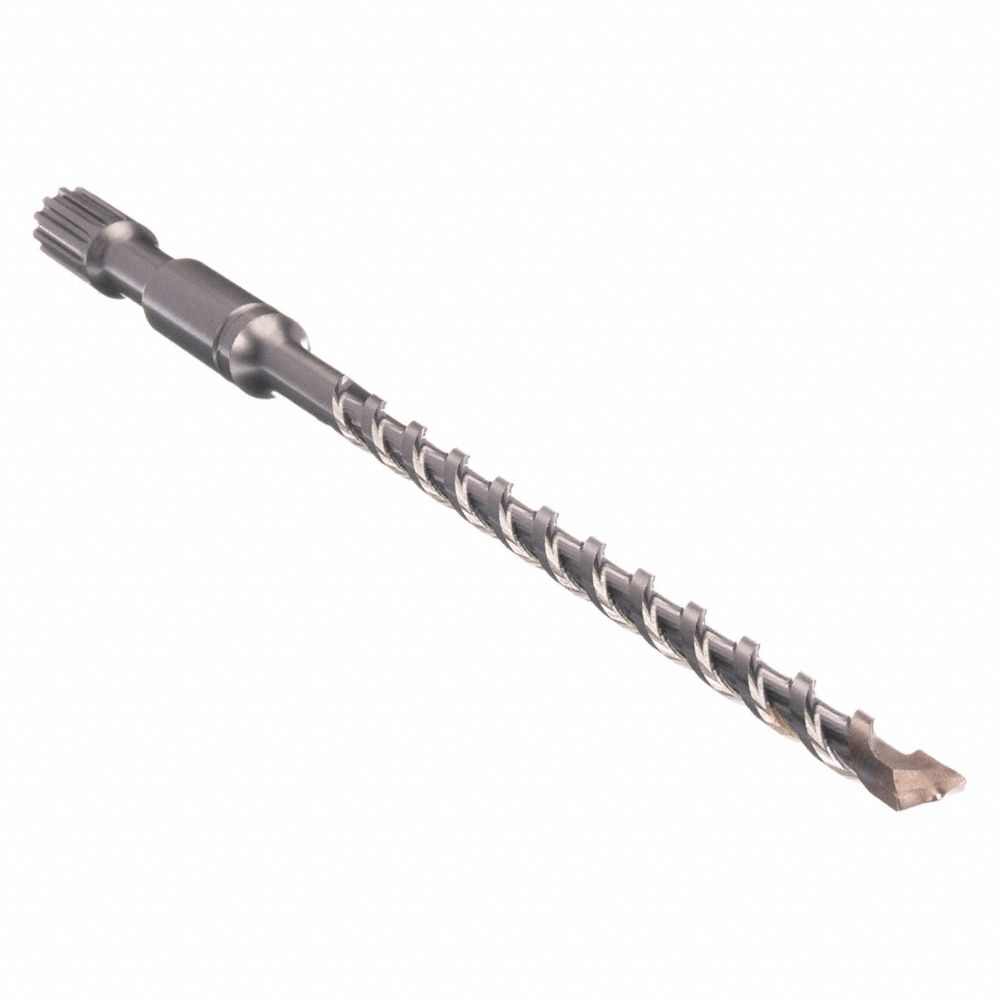-
Posts
710 -
Joined
-
Last visited
-
Days Won
74
Content Type
Profiles
Forums
Events
Posts posted by wingless
-
-
3 hours ago, Hagai said:
I think i got my answer here but somehow got confused... I got brand new tools and batteries, will my 18v - DCB115 charger charge my 20v - DCB204 batteries?
Welcome to the forum.
How could it possibly be confusing...
Yes, the DCB115 dual output charger, works for both 12V MAX and for 20V MAX (called 18V in the ROW market) batteries, will properly charge that DCB204 4Ah 20V MAX Lithium Ion battery pack.
-
Don't know the specific issue, but all the drain problems I've encountered on intact plumbing have been fully resolved by manual removal of stuff like hair, followed by using a plunger.
Many use a plunger wrong, attempting to push the waste into the drain. A plunger has almost no effectivity pushing.
Instead a plunger is great at sucking / pulling.
So add water as required and use the clog to break up the clog, by short / sharp suck stroke to destroy the blockage.
No idea on M12 drain tools, but I know they won't ever be part of my arsenal.
-
 1
1
-
-
Welcome to the forum.
All of those locations are already electrically connected and electrically identical.
There are regulations about stacking ground connections, including things like washers and locking washers.
Always follow the manufacturer's instructions.
The simplest correct thing to do is to scrape away paint from a different existing threaded hole, not disturbing existing correctly wired and correctly connected grounds. Wrap the twisted (assuming stranded) wire clockwise around the new ground screw. My suggestion would be to have a correct (same size) flat washer, then an external star lock washer, then the screw head, ensuring the screw length permits at least two full threads of penetration into the metal and ensuring the hole depth doesn't prevent proper tightening. Don't over tighten.
-
 1
1
-
-
On 3/30/2019 at 8:42 AM, wingless said:
That 29L-202 / 1609441472 Unobtainium table insert set is not available for purchase anywhere.
There were searches on Craig's List, eBay and Offer Up. Sellers having those parts with a table would not sell just those parts.
The Search All of Craig's List site found a seller on the other side of the country selling a table with those inserts for a reasonable price. I negotiated a purchase for just the inserts, sent him cash and a prepaid shipping label. A few days later I had my parts.
Now all is good.
For any interested party, this listing for 29L-202 / 1609441472 JUST popped up on eBay (not my listing) for these Unobtainium inserts.

-
 1
1
-
-
20 hours ago, bellsmith23 said:
Greetings to you all. I found the forum through Google, and it appears to be very successful. For my son, I want to make the best kids kayak. I would like to learn more about how to make it. Please share your knowledge with me. Looking forward to reading and learning.
 Likewise, I would like to contribute.
Likewise, I would like to contribute.
Welcome to the forum.
The best option / forum etiquette is to create a new topic in the correct location, probably in the Woodworking sub forum.
Posting off topic is thread hijacking is is frowned upon.
-
 1
1
-
-
Welcome to the forum.
Yes, that router will fit. I have the 1¼hp version of that router. Mine is 315.17491 part number.
Note there are two versions of that router table. To minimize confusion Sears sold both versions under the same part number.
Mine is the early version that only accepts a router, having a circular cavity on the bottom of the table that accepts the router.
The later version has that cavity expanded to also include a rectangular footprint that also accepts a jigsaw.
-
 1
1
-
-
Welcome to the forum.
Maybe something to screw an automotive brake caliper piston back into the bore when installing new brake pads.
-
FWIW, this galvanized steel / Schedule 40 PVC is not original to the 1963 construction, probably about 20 years old.
The water main feeding my meter apparently now comes from a branch feeding my neighbor’s meter.
That pit has a retired and uncapped copper feed to the street, ending in closed valve followed by a smooth hose barb. (That valve didn’t want to turn with a reasonable amount of effort, so unknown if still connected.)
My meter / 1/2 turn shutoff is fed by a buried flexible black plastic pipe heading off towards before my neighbor’s meter.
-
 1
1
-
-
This site lists Type 1 and Type 3 for that tool. No Type 4 was located.
-
Welcome to the forum.
Why not do a detailed examination of the parts listing for each version to determine what parts are different?
-
The existing one car wide concrete driveway is being replaced / upgraded to two cars wide w/ Belgard Catalina Grana Pavers in 4x8, 8x8 and 8x12, using Pattern B, plus four matching patios wrapping around the house.
Prior to that installation I have been scrambling to bury / rip out / relocate deeper all the "speak now or forever hold your peace" stuff before it becomes impossible.
One aspect is that the wider driveway will now have the below surface water meter box surrounded by pavers (in the driveway) instead of surrounded by grass (in the yard). Here in southern Florida everything is just inches below the surface.
This is a waaay nice meter box and I didn't want to risk the Bobcat guy breaking it during removal for relocation to a higher elevation, so I dug it up myself. I also exposed (dug up either side of the driveway) the water main and marked the driveway w/ spray paint so the Bobcat guy didn't damage that shallow water pipe passing under the concrete driveway that was being ripped out, then excavated deeper for the compacted crushed limerock.
What I discovered when I removed the water meter box is that the 3/4" soft copper tubing from the house to the water meter has a MPT fitting at the end. That is screwed into a 3/4" galvanized steel 45° FPT fitting, then Schedule 40 PVC to the MPT on the water meter. All of that was concealed from view until I removed the box.
That 45° galvanized steel fitting was covered w/ surface rust. That fitting was about to be buried in 6" compacted crushed Limerock, then 1" sand, then 2-3/8" (60mm) of pavers.
So the night before the excavation crew arrived I removed everything from the water meter to the 3/4" copper, replacing it w/ a heavy duty Nibco NL950X8CL 3/4" FPT ball valve and soldered Type L copper pipe. I wanted a regular ¼ turn valve instead of only having the ½ turn water meter shutoff valve.
Good thing I did this fix. Not only was the exterior of the galvanized steel fitting rusting, once it was removed I discovered that the interior was pinched down from rust, decreasing the water flow to the house. The two typical failures from galvanized steel is decreased flow and exterior leaks. This repair was about to become inaccessible.
Now the plumbing is solid, from the water meter to and through the house.






-
 1
1
-
-
Welcome to the forum.
When I sold my NOS Stanley Number 4 plane, it had some defects, but I sold it w/o any improvements.


-
Welcome to the forum.
Why not call DeWALT and ask customer service?
Why not examine a store display model, such as at Lowes, to determine if that characteristic exists on the floor sample.
-
Welcome to the forum.
When I drive my ground rods I use my Bosch RH540M SDS-Max Rotary Hammer w/ a TEMCo TH0376 5/8" bore SDS-Max ground rod driver adapter bit. It is a short bit w/ a cylindrical cavity at the end.
The ground rods go into the Earth like a hot knife through butter. There is sometimes a rock slowing progress, but I just wait for a second, then it continues to the desired depth.
Unlike using a sledge hammer, the ground rod end looks new.
FWIW the grounding on the house shown in the image was horrible before it was fixed by me. There was a 3' ground rod, not even buried, w/ a solid 10AWG bare wire connection to the main panel, nothing to the copper plumbing. Now everything is done to current code.





-
Welcome to the forum.
Here is the manual for that washer/dryer.
According to page 50 either drying not selected or door not closed properly.
If it has been working properly, then I would do all the maintenance items, starting on page 41 to see is that helps.
-
One point I find interesting in the Owner's Manual does not specify a grease for the bit.
My Bosch RH540M SDS-Max tool defines usage of a grease each time the bit is changed.
IMO that would be a good practice to implement.
-
-
-
No to all of the above.
Examine the previously linked manual. (Navigation required, then in the bottom left corner)
Four model numbers use the spline drive, including the one for the OP. Three use SDS-Max bits, those have different model numbers.
-
Welcome to the forum.
Here is the Owner's Manual, available in the link.
That part number accepts a 12 spline bit.
This adapter might work.
IMO a different tool, that accepts SDS Plus or SDS Max bits is probably a better option than this dinosaur w/ weird bits.
-
Functionally the device has been fine.
From the previously linked topic:
The wiring design was a big disappointment. The 18kW heater has a single 3/4” wiring knock out w/ double flats and includes an appropriate cable clamp. My installation within an interior closet led me to not want to place jacketed NM-B cable so it exists within the living space. My solution was to instead use a 3/4” Schedule 40 conduit and 90° elbow. The problem is that 3/4” conduit is too small for four 8 AWG stranded conductors (with two ground wires). The only wiring option is 8/2 NM-B, unless using individual conductors in conduit, like THHN, because there is no 8/4 NB-B wire available.
A much better wiring solution would be to have a rear entry, through the wall. That was not possible for me to implement, if I were inclined to modify this UL-approved enclosure, because the only space available for placement of this hole is obstructed by a horizontal mounting stud. If the wire were permitted to enter from the rear, then there would be no wiring exposure to the living space and no issue w/ the 3/4" conduit being too small.
The wiring provision was a disappointment for those listed reasons.
Also disappointed in the documentation for this reason:
The valve kit I used permits periodic usage of a tankless water heater cleaning kit, to run vinegar through the tankless heater, to remove scale. There is zero mention of cleaning in the tankless manual or the web page.
-
 1
1
-
-
The greatest issue for me is I am lacking in the most important plumbing trait. I don't have a huge butt crack, that is critically important to display for all those in the area.
The tankless is a great option, but the system must be sized to work w/ the incoming water temperature. Down here in southern Florida, the incoming water temperature never drops below 70°F. Probably closer to high 40's for the worst case in Chicago.
My overkill tankless solution has two 40A / 240VAC feeds, 18kW and I could have possibly gone one size smaller. For Chicago it might be required to go w/ three 40A / 240VAC feeds, perhaps even w/ multiple heaters.
If going that route don't forget the shutoffs and over pressure / temperature kit.
-
Thanks for your history.
Agreed that Bosch tools are very high quality. I have been very happy w/ those that I own.
My Festool RO150FEQ ROTEX sander has been both a workhorse and a very fine tool. This was purchased over a decade ago for vacuum sanding the bottom of my boat. There are more hours than I can count of operation in that very abusive environment. I have also used this for finish sanding on other project w/ excellent results.
My experience is also very positive w/ my DeWALT and my Milwaukee power tools, many with dedicated topics on this forum.
-
Welcome to the forum.
In my area a building permit is required for everything except painting.
On obvious exterior stuff (like a roof) it is hard to imaging a DIY job won't get caught.
My city has Code Compliance vehicles driving around for this purpose.
Assuming a contractor is used, do all diligence to ensure they have a good history and insurance.
If DIY, do work correctly and safely.








wingless' Okie Doakie Sales Inc. EBAA Water Meter Box
in Around The House
Posted
There has been a long ongoing ordeal to replace my crumbling concrete driveway w/ slate colored Belgard Catalina Grana pavers.
The driveway width was changed from one car wide to two cars wide.
This southern Florida home has the water meter and water main near the surface. The meter was located adjacent to the driveway, but would now be within the wider driveway.
Fortunately, this house has the patented Okie Doakie Sales Inc. water meter box, cast by EBAA Iron Inc. Many homes instead have a concrete water meter box w/ a small cast iron door.
The Okie Doakie Sales Inc. water meter box instead has a large / deep / thick / strong composite box frame, plus a ductile iron top w/ a hinged door. This is designed to tolerate heavy loading, of at least 20,000 pounds on the top plate.
This water meter box has been removed and replaced many times during this project. During one I fortunately discovered / replaced a deteriorating galvanized steel fitting before that operation became "impossible" by being covered w/ the new paver driveway.
Another time was when a paver crew drove a pickax into the water main adjacent to the water meter box.
Once this was finally placed I wanted to clean up / paint the ductile iron for better appearance. I sanded the surface using my Festool RO150FEQ rotary / oscillating sander. That sanding got the flat surface into great condition for painting.
But all the recessed hatch grooves, text and logo still was filled w/ rusty crud. I used a small conical grinder w/ a ¼" shaft and a rotary tool to clean up all those recessed details.
The ductile iron was painted w/ Rustoleum Satin Protective Enamel in coastal gray color, the best match available from the local big box store.
This part now has a finished appearance.